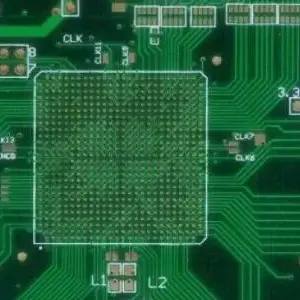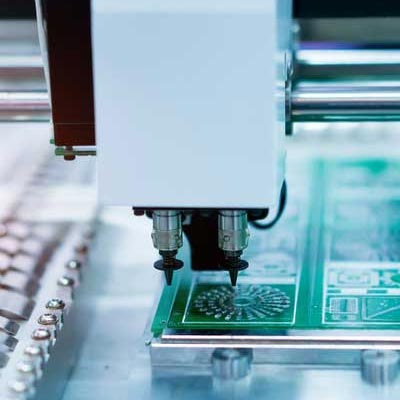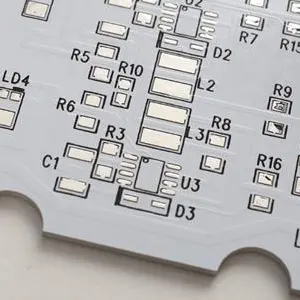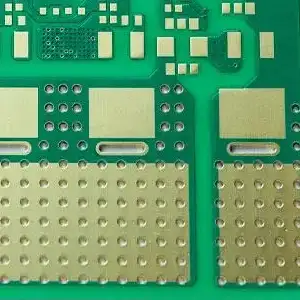Teflon PCB: Quality Circuit Board Manufacturer
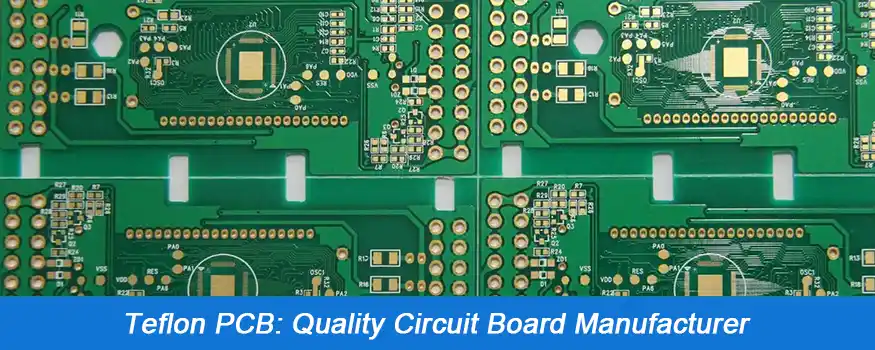
For the past years, different PCB substrates have become popular in the market. Teflon is one of PCB fabrication’s most popular substrates and laminate materials, known for its high performance and immense heat, cold, and chemical resistance capabilities. Unitepcb is a professional Teflon PCB manufacturer and supplier in China, we can offer different types of Teflon PCBs for your project.
What is Teflon PCB?
Teflon PCB, or PTFE PCB, is a high-frequency PCB using polytetrafluoroethylene (PTFE) as its PCB substrate. Teflon PCBs transmit signals of 5GHz and higher frequencies. Teflon is the brand name that Dupont Corporation uses for its PTFE materials, and it is so well-known that people use Teflon PCB to refer to PTFE substrate PCBs used for microwave and RF applications.
Why is Teflon Being Used in the Large Scale in High-speed PCBs?
Polytetrafluoroethylene, which is a fluorocarbon-based polymer, has some unique set of mechanical and chemical properties. This material can withstand temperatures of up to 260 degrees Celsius and cryogenic temperatures of up to 260 degrees Celsius. In addition to this, a few amongst the most uprising characteristics of Teflon material include:
● High molecular weight
● Low chemical reactivity
● Good flame resistance
● Low coefficient of friction
● Good dielectric properties
● High electronegativity
● Temperature stability
● High physical strength
● Resistant to oil, grease
● Moisture proof
● Low dielectric constant along with good insulation ability
● Electrical and thermal insulation
● Weather and UV resistance
Teflon has outstanding excellent comprehensive properties, high-temperature resistance, corrosion resistance, non-stick, self-lubricating, excellent dielectric properties, and a very low coefficient of friction. Among Teflon PCB, Teflon is a high-frequency PCB material with very excellent performance, which is very suitable for applications in radar, high-frequency communication equipment, radio equipment, and other fields.
Teflon PCB Manufacturing
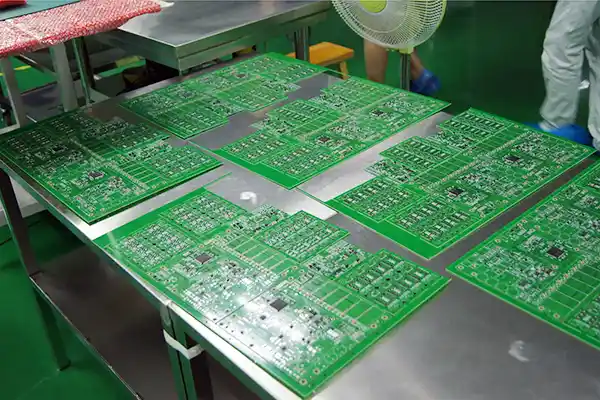
To ensure the quality of the final PTFE PCB, manufacturers must pay careful attention to the fabrication process. We cannot handle PTFE the same way we take other materials such as FR-4. There are what you should know about Teflon PCB manufacturing:
1. Preparing the Surface
In this phase, the manufacturer must utilize sodium etchings. This process will enhance the bondability of the Teflon material. We perform this by soaking the material in a solution that consists mainly of sodium. Once this process is complete, we rinse the Teflon material using alcohol and H2O solution.
Additionally, they can use a process called plasma arc gasification. It prepares the surface for marking, metallization, and eventual layer shaping.
2. Copper Cladding
Copper plating is a nearly universal phase in PCB fabrication. This step involves preparing the copper surface, drilling the PTFE, and plating the through-holes. The manufacturer must use copper with high-tensile strength to prevent barrel cracks and lift pads.
3. Solder Mask
PCB Manufacturers must implement the solder mask in less than 12 hours after the etching process. The PCB manufacturer may ensure no residual moisture by baking the Teflon material in an oven before applying the solder mask.
4. Drilling
The manufacturer must use a drill with a high chip load to ensure that all fibers are removed and there is no Teflon tailing. This step ensures that the drilled holes are clean and precise.
5. Storage
Teflon laminates are often soft and susceptible to tears and other damage. Thus, it would help if you handled them with the utmost care.
6. Lamination
We can perform the lamination of Teflon PCB materials at temperatures of up to 370 °C and pressures of 450-500 pounds per square inch (PSI). Moreover, we can perform lamination at these temperatures without using prepregs or bonding films.
However, some PCB manufacturers may use prepregs and bonding films with shallow melting points. Of course, this helps us reduce the temperature of the lamination process to 215 or 120 °C.
Furthermore, there are hybrid Teflon PCBs, that use a combination of Teflon and FR4. Nevertheless, these require oxide pretreatment before the final lamination process.
Steps in the Production of Teflon PCB Prototype
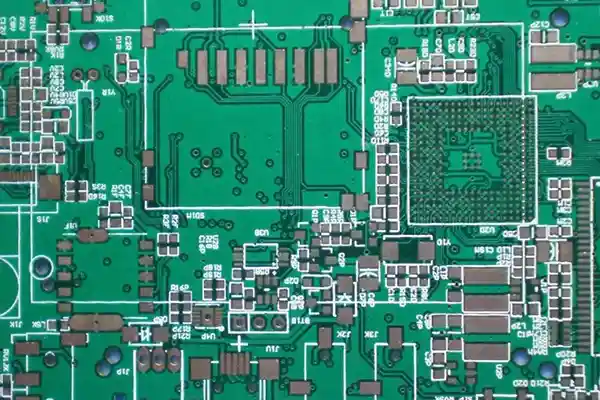
The steps of producing Teflon PCB are relatively easy once you get to know the exact processes and prioritize your needs and preferences. As a Teflon PCB manufacturer, you have to consider the steps mentioned below.
First, select the materials: The first thing you have to consider while producing a Teflon PCB prototype is to select the right materials. Be careful and take professional help if needed. Remember, your one wrong Teflon PCB material selection can ruin the upcoming process. So, select the materials carefully.
Now, opt for a design: It’s time for a logical design. The design will enable you to identify whether your design is going right or you need to change it.
Testing: Once the Teflon PCB material gets assembled according to the design, it’s time to test all connectivity and other details. In case the design is not working properly, you can opt for a new one before finalizing it.
Bug rectification: Identifying the bug and repairing it is crucial if you want an error-free outcome each time. Therefore, before going for the final stage, don’t forget to rectify the bug.
Immediate prototyping: It is now time to assemble and prototype all parts. You have to place the prepared stencil on the board and mount all components in this process.
Final testing: Once you get done with all steps, you have to test the functionality of the Teflon PCB now. If it matches your expectation, finalize it without any second thought.
Applications of Teflon PCBs
The above advantages of Teflon PCBs clearly tell us that Teflon PCBs are specially used in high-frequency fields.
The military-grade Teflon PCBs (such as Rogers RT5000 and RT600 series) are mainly used in:
● Antenna systems,
● Communications systems, etc.
The commercial Teflon PCBs (such as Rogers RO3000 series) are mainly used in:
● Active safety,
● Antenna systems,
● Communications systems,
● Telematics and information,
● Backhaul radios,
● Power amplifiers,
● Handled device cellular and Wifi antenna, etc.
Teflon PCBs are an ideal option in the aerospace industry. These boards can withstand high temperatures and harsh chemicals. Most electronic devices used for aerospace applications are subjected to varying conditions.
Professional Teflon PCB Manufacturer
For Teflon PCB manufacturing, both the product quality and PCB pricing deserve consideration. Unitepcb is one of the world’s best yet cost-effective Teflon PCB manufacturers. PTFE material is widely used in high frequency PCB, We accept Teflon PCB Prototype order with quick turn delivery, All Prototype PCB at industry standard quality of course. At present, in the manufacture of Teflon PCB for unitepcb, Teflon PCB material can achieve 4~6 layers of pure compression; 4~8 layers of mixed compression.
Unitepcb is experienced in the production of various high-frequency circuit boards. For most RF PCB materials (such as Ceramic PCB, Teflon PCB, Rogers PCB, Taconic PCB, and Arlon PCB), we have sufficient inventory to ensure fast delivery.
If you are looking for a quality Teflon PCB manufacturer or want to know the quoted price for your Teflon PCB design, you are welcome to contact Unitepcb by email or online.

